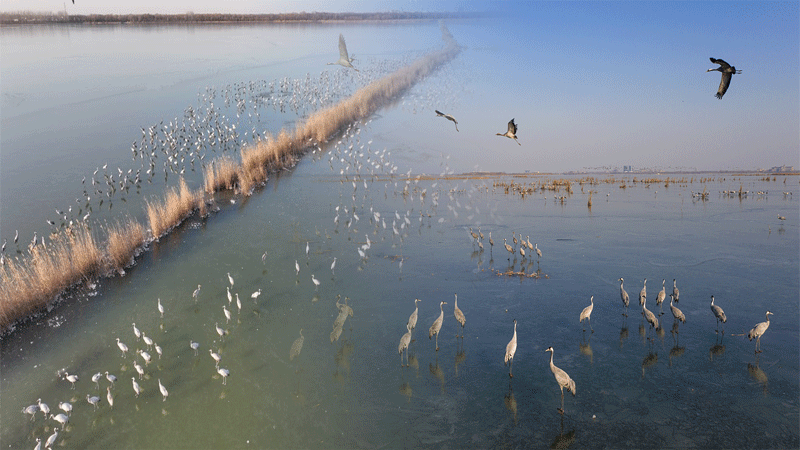During the 2022-2023 migratory bird monitoring operations conducted from January 7 to 11, staff spotted 60 species of migratory birds, according to Zhang Yuguang.

More than 64,000 migratory birds have recently been spotted in a nature reserve in Hebei Province of North China, authorities said.
During the 2022-2023 migratory bird monitoring operations conducted from January 7 to 11, the staff spotted 60 species of migratory birds, according to Zhang Yuguang of the resource protection bureau of Hengshui Lake National Nature Reserve.
These birds included six species under first-class national protection, such as the Baer’s pochards and oriental white storks, an increase of two species compared with that of the 2021-2022 period, said Zhang.
“The Baer’s pochards and oriental white storks are ‘long-term residents’ of Hengshui Lake,” Zhang added. “We also monitored 16 bird species under second-class national protection, an increase of three compared with the 2021-2022 period.”
A survey of wintering Baer’s pochards and cranes in the 2022-2023 period was also completed, with 42 Baer’s pochards and 3,860 grey cranes monitored.
Baer’s pochards and oriental white storks are both considered to be first-class national protected species in China. The inclusion of these two species brings the total number of first-class, nationally protected bird species in China to six.
These species are considered to be critically endangered and receive the highest level of legal protection in the country. Efforts are being made to conserve their population and habitat, such as habitat restoration and protection, captive breeding, and law enforcement.
Hengshui Lake is the only national nature reserve on the north China plain that maintains a complete wetland ecosystem of swamps, water, mud flats, meadows and woodlands.
Hengshui Lake National Nature Reserve in China is a protected area known for its diverse wildlife and scenic beauty. It is located in Hengshui, Hebei Province, and covers an area of approximately 350 square kilometers.
The reserve is home to many plant and animal species, including rare and endangered species like the crested ibis, Chinese sturgeon, and black stork. Wetlands, forests, and grasslands are also part of the reserve, as are several cultural and historical sites. It is popular for birdwatching, hiking, and other outdoor activities.
Originally published at CGTN
